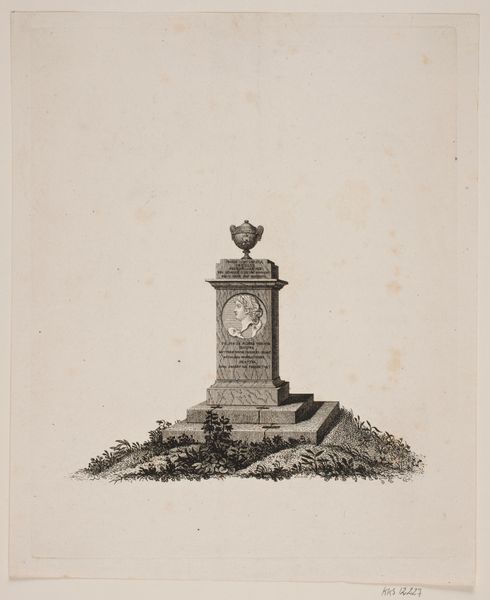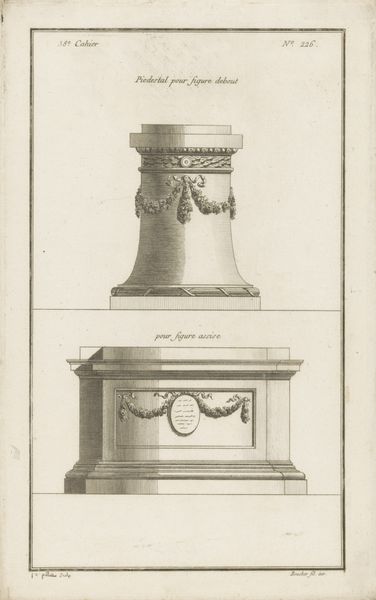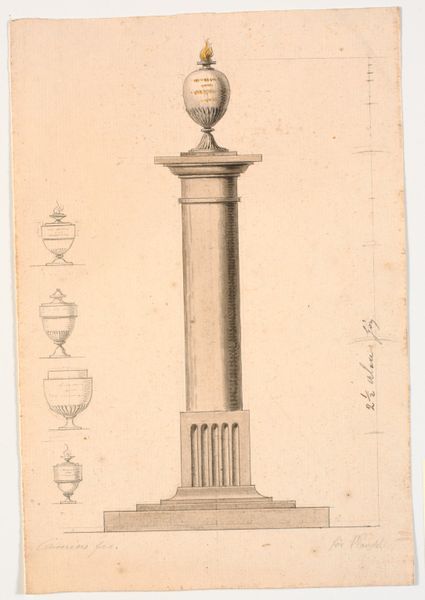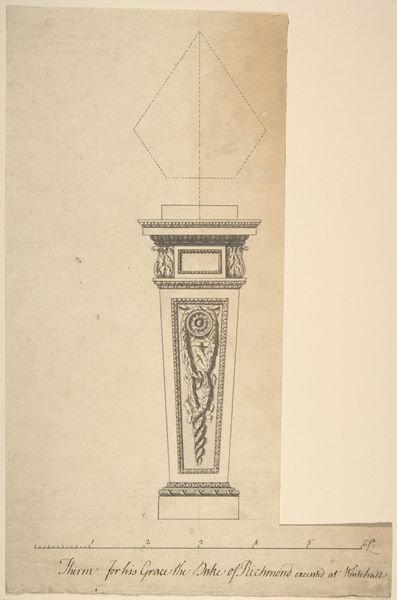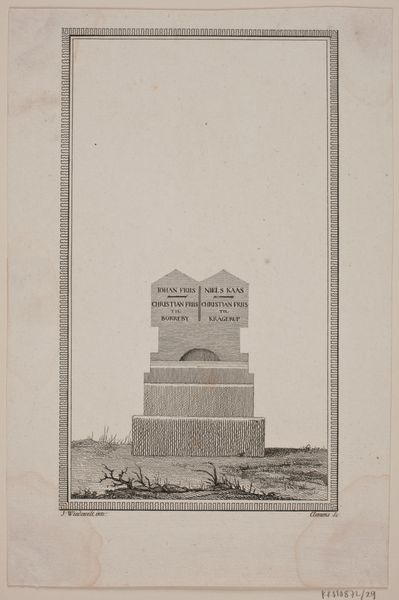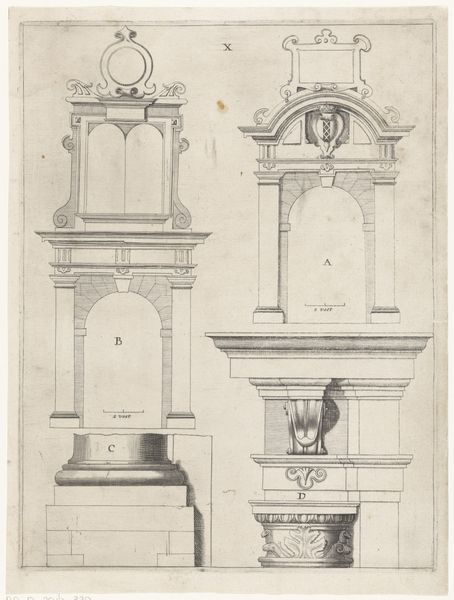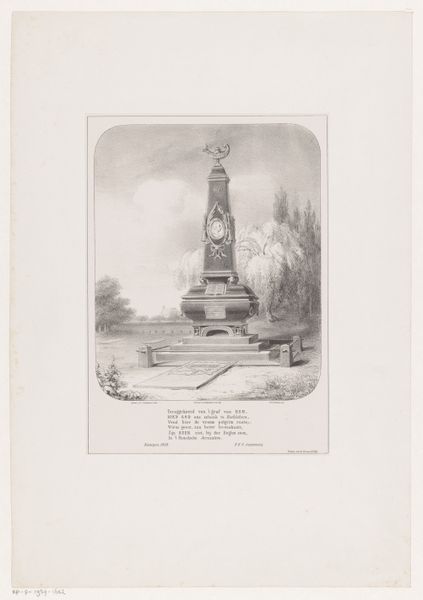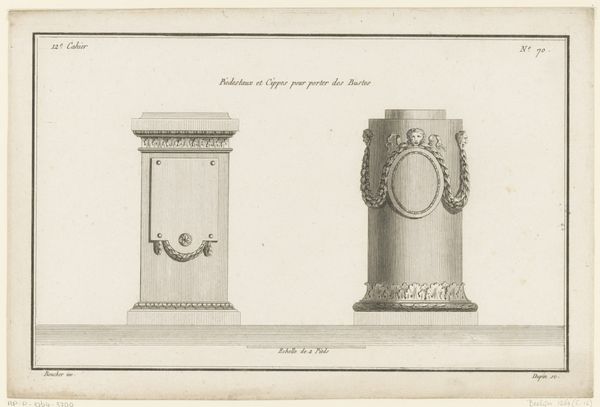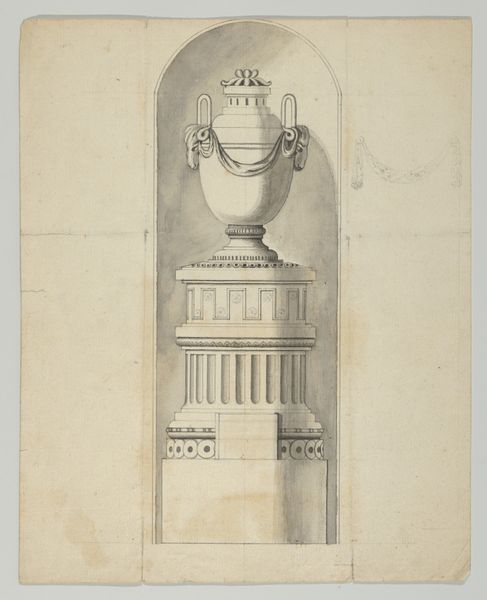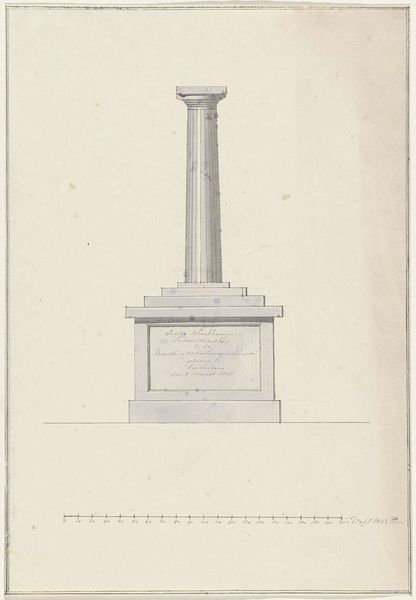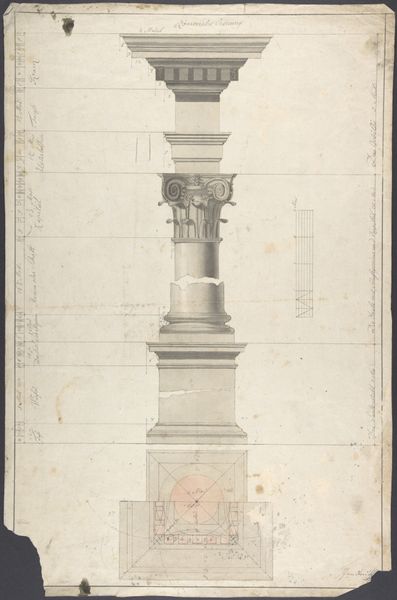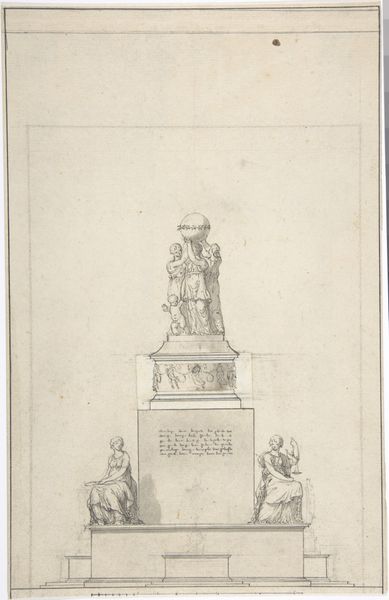
drawing, print, etching, engraving
#
drawing
#
neoclacissism
# print
#
etching
#
history-painting
#
engraving
Dimensions: 178 mm (height) x 102 mm (width) (billedmaal)
Curator: Welcome. Before us is the print "Ove Gjedde," dating from 1779 to 1781, etched and engraved by J.F. Clemens, after J. Wiedewelt. The piece is currently held at the Statens Museum for Kunst, and it exemplifies Neoclassical aesthetics. Editor: It feels austere, doesn't it? A very formal depiction of a monument. The crisp lines of the engraving enhance that feeling. A memorial dedicated to... whom, exactly? And what is represented on the pillar? It looks like some cartography, but the details elude me. Curator: Precisely. The monument honors Ove Gjedde, a 17th-century Danish admiral and governor who played a crucial role in establishing Danish colonies in India. The imagery on the pillar is a map representing the fortresses and trade routes he oversaw. It represents the intersection of colonialism and state power. Editor: The connection to colonialism complicates its stoic presentation, doesn't it? Neoclassicism often evoked notions of civic virtue and empire, but when linked directly to colonial figures, we are compelled to examine this historical narrative and its lasting impact on those colonized. How does this work function within the context of Danish national identity? Curator: That’s precisely the dialogue it initiates. During the late 18th century, the ideals of the Enlightenment were juxtaposed with the realities of colonialism. Such monuments visually bolstered the legitimacy of these enterprises. By commemorating Gjedde, the print participates in constructing a particular historical memory for the state. Editor: So the engraving itself functions as propaganda to shape national and global perspectives of Denmark's expansion and authority, rather than to remember colonial atrocities. Understanding this allows for a better, clearer reading of the aesthetic choices behind Neoclassicism and their relation to colonial enterprise. Curator: Indeed. It prompts us to examine how visual culture has served to normalize and perpetuate historical power dynamics. It also makes you question who chooses which stories are considered significant in forming that collective memory. Editor: And it reminds us to be critical when these stories and narratives are used as history, requiring a dialogue of challenging their perceived virtues in society. Thank you, I will never look at Neoclassical works in quite the same way now! Curator: The pleasure was mine. This print embodies so much history and presents so many questions that need critical thinking today. I’m pleased we could unravel some of its threads.
Comments
No comments
Be the first to comment and join the conversation on the ultimate creative platform.
